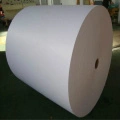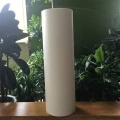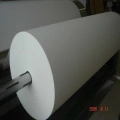Fiberglass air filter paper has emerged as a critical component in modern air purification systems, offering superior performance in a wide range of industrial, commercial, and residential applications. Constructed from glass microfiber wool, this advanced filtration material is produced using a wet-forming method that ensures optimal fiber distribution, high dust-hold capacity, and low resistance. Its versatility and durability make it an ideal choice for applications requiring precise air quality control, from HVAC systems to semiconductor manufacturing. This article delves into the technical specifications, applications, and industry-leading capabilities of fiberglass air filter paper, supported by authoritative references and detailed product insights.
Fiberglass air filter paper is a specialized material designed to capture airborne particles while maintaining airflow efficiency. The production process involves the wet-forming method, which ensures uniform fiber alignment and enhanced mechanical strength. This results in a product that balances high filtration efficiency with low pressure drop, making it suitable for demanding environments. The material is categorized into three primary series based on filter efficiency: ASHRAE, HEPA, and ULPA, each tailored for specific applications.
The glass microfiber composition provides exceptional thermal stability and chemical resistance, ensuring long-term performance in diverse conditions. Its high dust-hold capacity minimizes the need for frequent replacements, while the low resistance design reduces energy consumption in ventilation systems. These properties make it a preferred choice for industries where air purity is paramount, such as pharmaceuticals, electronics, and cleanroom environments.
The following table outlines the detailed technical specifications of fiberglass air filter paper across its ASHRAE, HEPA, and ULPA classifications:
| Classification | Grade | Efficiency (%) | Basic Weight (g/m²) | Thickness (mm) @100kPa | Air Resistance (Pa) @5.3cm/s | Tensile Strength (N/m) MD | Stiffness (mg) MD | |
|---|---|---|---|---|---|---|---|---|
| Minimum | Maximum | |||||||
| ASHRAE | FY-F9 | 95 | 70 | 0.34 | 55±10 | 1200 | 1200 | 1200 |
| FY-F8 | 90 | 70 | 0.34 | 35±5 | 1200 | 1200 | 1200 | |
| FY-F7 | 80 | 70 | 0.34 | 33±5 | 1200 | 1200 | 1200 | |
| FY-F6 | 60 | 70 | 0.33 | 20±5 | 1200 | 1200 | 1200 | |
| HEPA | FY-H14 | 99.995 | 70 | 0.34 | 340±20 | 1200 | 1200 | 1000 |
| FY-H13 | 99.97 | 70 | 0.34 | 290±20 | 1200 | 1200 | 1000 | |
| FY-H12 | 99.8 | 70 | 0.34 | 250±20 | 1200 | 1200 | 1000 | |
| FY-H11 | 98 | 70 | 0.34 | 120±20 | 1200 | 1200 | 1000 | |
| FY-H10 | 94 | 70 | 0.34 | 80±15 | 1200 | 1200 | 1000 | |
| ULPA | FY-U17 | 99.9999 | 73 | 0.37 | 500±20 | 1200 | 1200 | 1000 |
| FY-U16 | 99.9999 | 73 | 0.37 | 440±20 | 1200 | 1200 | 1000 | |
| FY-U15 | 99.999 | 73 | 0.37 | 390±20 | 1200 | 1200 | 1000 | |
Fiberglass air filter paper is employed in a variety of applications, each leveraging its unique properties to meet specific air quality requirements:
The fiberglass air filter paper is manufactured by Hebei Fangyu Filters Material Technology Co., Ltd., a leading provider of advanced filtration solutions. Based in Hebei, China, the company specializes in producing high-quality filter media for global markets. With a commitment to innovation and precision, Hebei Fangyu adheres to international standards such as EN779 and ISO16890, ensuring their products meet rigorous performance criteria.
The company's expertise in fiberglass filter paper manufacturing is complemented by its focus on sustainability and customer-centric solutions. Hebei Fangyu's product portfolio includes HEPA filter paper for sale and HEPA filter paper manufacturers, catering to industries that demand precision and reliability. Their state-of-the-art facilities and quality control processes ensure consistent performance, making them a trusted partner for clients worldwide.
Below are images of the fiberglass air filter paper in action:



The performance of fiberglass air filter paper is validated through adherence to international standards such as EN779 and ISO16890. These standards ensure that the product meets specific efficiency and durability benchmarks, providing users with confidence in its performance. For example, HEPA filters are tested to capture 99.97% of particles 0.3 microns in size, while ULPA filters achieve even higher efficiency, making them suitable for ultra-clean environments.
As highlighted by the National Institute of Standards and Technology (NIST), the importance of standardized testing in filtration technology cannot be overstated. NIST's research on measurement science and material testing provides a framework for evaluating the effectiveness of air filter media, ensuring that products like fiberglass air filter paper meet the highest levels of quality and reliability.
Fiberglass air filter paper represents a significant advancement in filtration technology, offering a combination of high efficiency, durability, and cost-effectiveness. Its ability to meet the stringent requirements of industries ranging from healthcare to semiconductor manufacturing underscores its value as a critical component in modern air purification systems. With Hebei Fangyu Filters Material Technology Co., Ltd. leading the way in innovation and quality, the future of air filtration looks brighter than ever.
National Institute of Standards and Technology (NIST). (n.d.). Driving Innovation. Retrieved from https://www.nist.gov/
Hebei Fangyu Filters Material Technology Co., Ltd. (n.d.). Fiberglass Air Filter Paper. Retrieved from https://www.filtersmaterial.com/fiberglass-air-filter-paper.html
Thickness:0.2-6 mm or Customized
Strand Thickness:0.5-8mm
Swd:2.5-100mm Lwd: 4.5-200mm
Surface Treatment:Powder Coated,Galvanized
MATERAL: PHENOLIC PAPER
MELT-BLOWN PBT
NON-WONEN LAMINATES
DIESEL FUEL FINE FILTERATION GRADE
APPLICATION : FUEL OIL WATER SEPERATION FILTER MEDIA
Material: Electrostatic cotton with activated carbon
PET/PP with Activated Carbon
Basic weight: 200-800g/m2
Application: Cabin Air Filters Panel Air Filters, Filter Cartridge, etc.
RAW MATERIAL: Polypropylene
PROCESS TECHNOLOGY: Melt-blown non-woven
RANGE OF EFFICIENCY: M5 ~ H11
Jul,2025,31
Jul,2025,31
Jul,2025,31
Jul,2025,31
Email to this supplier

